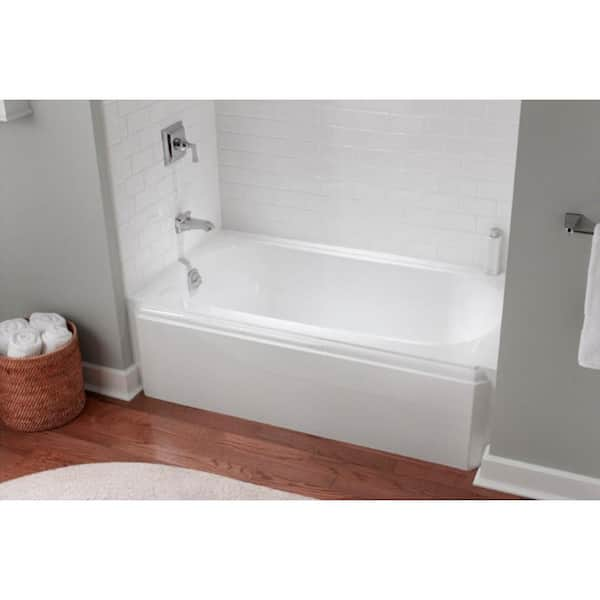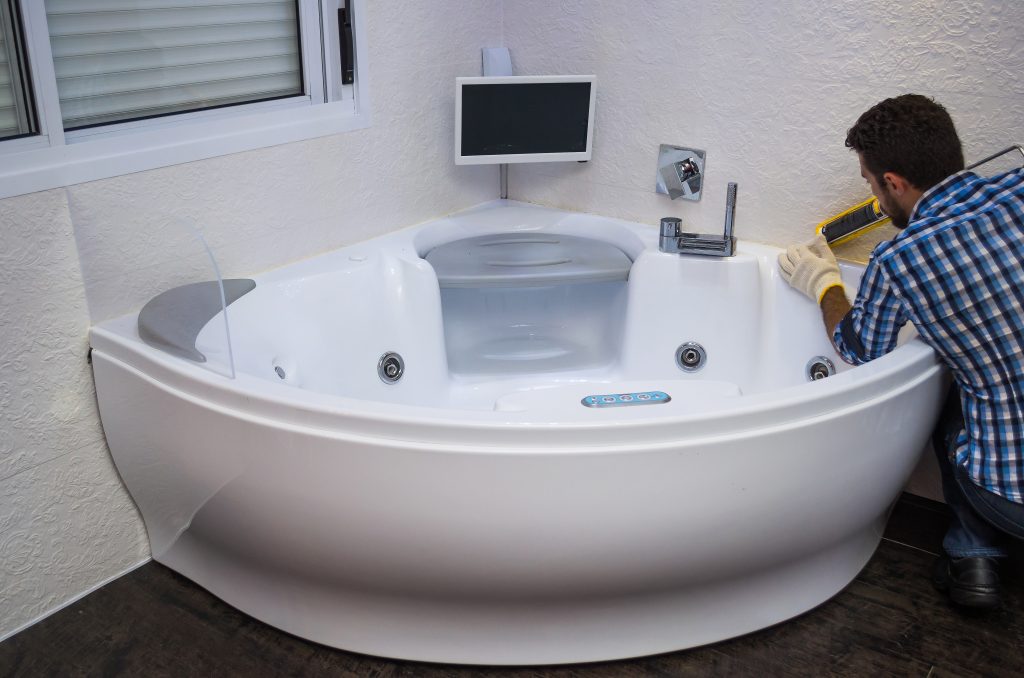Why Learning Plumbing Basics is Crucial for Installing a Bathtub
Why Learning Plumbing Basics is Crucial for Installing a Bathtub
Blog Article
How do you actually feel in regards to How to Install a Bathtub Yourself?

Setting up a tub isn't exactly rocket science, however it does require strong plumbing, carpentry, as well as in some cases, tiling skills. Changing an old bathtub with a brand-new one is also a moderately difficult task. If the old tub is readily accessible, the job can move speedily; if you have to open up a wall surface to eliminate the old bathtub and also position the brand-new bath tub, the task is much harder. In either situation, the project is within a home handyman's skills, although you will need a helper to move out the old bathtub and embeded in the new one. Make certain you have actually certified on your own for the work and fit trying it. As opposed to employing a specialist to take over a halfway-completed task, it is much better to consider using one prior to you start. Possibilities are you might require an expert plumber to make tube connections.
This write-up will aid you install a new tub in your bathroom if you have currently purchased a brand-new bathtub and also do not require to transform the setup of your previous supply of water pipes.
Your devices and material checklist ought to comprise the following:
Removing Old Touches
If you require to change old faucets with new ones as a part of your installment, then the first thing you ought to do is detach the supply of water. After doing so, turn on the taps to drain pipes any water continuing to be in the system. The process of removing the existing taps can be rather troublesome as a result of the restricted access that is frequently the instance.
Utilize a basin wrench (crowsfoot spanner) or a faucet tool to reverse the nut that connects the supply pipelines to the taps. Have a fabric prepared for the staying water that will certainly originate from the pipelines. As soon as the supply pipes have been gotten rid of, utilize the very same device to loosen up the nut that holds the faucets onto the bath/basin. You will certainly require to stop the solitary faucets from turning throughout this process. Once the faucets have actually been gotten rid of, the holes in the bath/basin will have to be cleansed of any kind of old securing substance.
Prior to carrying on to fit the new faucets, compare the pipe links on the old taps to the brand-new taps. If the old taps are longer than the new faucets, then a shank adapter is required for the brand-new faucets to fit.
Suitable New Touches
If the tails of the new faucets are plastic, then you will certainly need a plastic connector to prevent damage to the string. One end of the adapter fits on the plastic tail of the tap as well as the other end provides a connection to the existent supply pipelines.
If you require to fit a monobloc, after that you will call for decreasing couplers, which links the 10mm pipeline of the monobloc to the basic 15mm supply pipeline.
Next off, position the tap in the mounting hole in the bath/basin ensuring that the washers are in place in between the faucet and also the sink. Safeguard the faucet in position with the maker offered backnut. Once the faucet is safely in place, the supply pipelines can be linked to the tails of the faucets. The faucets can either be linked by utilizing corrugated copper piping or with typical tap adapters. The former kind ought to be linked to the tap ends first, tightening only by hand. The supply pipes can later on be linked to the other end. Tighten both ends with a spanner after both ends have been connected.
Installing the Bath tub
Using the two wood boards under its feet, put the bath tub in the required position. The wooden boards are valuable in uniformly spreading the weight of the bathtub over the area of the boards as opposed to concentrating all the weight onto four little factors.
The following objective is to ensure that the tub is leveled all round. This can be attained by checking the spirit level and changing the feet on the tub up until the spirit level reviews level.
To mount faucets, fit all-time low of the outermost flexible faucet connector to the suitable supply pipeline by making a compression join; then do the exact same for the other tap.
Turn on the water system as well as inspect all joints as well as new pipework for leakages and also tighten them if required. Load the tub as well as likewise examine the overflow electrical outlet and also the typical electrical outlet for leakages.
Ultimately, take care of the bath paneling as defined in the maker's instruction manual. Tiling and sealing around the bathtub should wait until the tub has actually been made use of at the very least when as this will resolve it right into its last setting.
Getting ready for the Setup
Firstly, the supporting framework provided with the bath ought to be fitted (if needed) according to the producer's instructions. Next off, fit the faucets or mixer to the tub. When suitable the faucet block, it is essential to make certain that if the faucet includes a plastic washer, it is fitted between the bath and also the taps. On a plastic bathroom, it is also practical to fit a sustaining plate under the faucets unit to stop stress on the tub.
Fit the versatile faucet adapters to the bottom of both taps making use of 2 nuts as well as olives (sometimes provided with the bathtub). Fit the plug-hole electrical outlet by smearing mastic filler round the sink electrical outlet hole, and afterwards pass the electrical outlet through the hole in the bath. Make use of the nut provided by the producer to fit the plug-hole. Examine the plug-hole outlet for an inlet on the side for the overflow pipe.
Next off, fit completion of the flexible overflow pipe to the overflow outlet. After that, screw the pipe to the overflow face which should be fitted inside the bathroom. Make certain you use every one of the supplied washing machines.
Connect the catch to the bottom of the waste outlet on the bath tub by winding the string of the waste electrical outlet with silicone mastic or PTFE tape, as well as screw on the catch to the electrical outlet. Link all-time low of the overflow tube in a similar manner.The bathroom ought to currently be ready to be fitted in its last placement.
Tiling Around the Tub
In the location where the bathroom satisfies the floor tile, it is necessary to seal the joins with a silicone rubber caulking. This is essential as the fitting can relocate sufficient to crack a stiff seal, creating the water to permeate the wall between the bathroom and also the tiling, causing difficulties with moisture as well as feasible leaks to the ceiling listed below.
You can pick from a variety of coloured sealers to assimilate your components and installations. They are marketed in tubes and also cartridges, and are capable of securing gaps as much as a size of 3mm (1/8 inch). If you have a larger space to fill up, you can fill it with spins of soaked newspaper or soft rope. Bear in mind to constantly load the tub with water before sealing, to allow for the motion experienced when the tub remains in usage. The sealer can split rather very early if you do not take into consideration this motion before sealing.
Alternatively, ceramic coving or quadrant floor tiles can be utilized to border the bathroom or shower tray. Plastic strips of coving, which are easy to use and cut to dimension, are also easily offered on the marketplace. It is advisable to fit the tiles making use of waterproof or water resistant sticky and grout.
Bathtub Installation
How Important Is A Bathtub To Your Home?
High-quality baths, showers, and other bathroom updates are necessary when considering a smart investment in your home. It’s a room that you go to every day and one that is constantly being used by guests.The bathroom is one of the top trafficked rooms in a home and also one of the most valuable in terms of home resale.
Install Piping Before Tub
You will be using your existing drain and waste vent system, but pipes required include the hot and cold water supply lines and a pipe leading to a shower head. A mixing valve and shower head are also needed. Air chambers may be required.
Position the Tub
Lower the tub into place so that the continuous flange fits against the wall studs and rests on 1’x4' or 2’x4' supports. Anchor the tub to the enclosure with nails or screws inserted through the flanges into the studs.
NOTE: Remember, bathtubs and shower stalls may require support framing. A bathtub filled with water is extremely heavy, so check building codes and framing support before installing the tub.
Assemble Drain Connections
Assemble the bathtub drain connections by connecting the tub overflow with the tub drain above the trap, not beyond it. The trap will have a compression fitting that screws over the arm of the overflow assembly.
Place a Pipe For the Shower Head
First, locate a brass female threaded winged fitting and attach it to a framing support via a screw or a nail. Then run a pipe up the wall for the shower head. Sweat or solder the other side of the brass fitting to the top of the pipe.
Attaching Hot and Cold Water Lines
Attach your water lines for both hot and cold by sweating these directly into the hot and cold ports of the mixing valve. The mixing valve will be how water enters the tub’s system, not by the pipes themselves.
Install the Spout
Extend a piece of 1/2 inch pipe, or whichever length is specified in the manufacturer’s instructions, for the tub spout. Sweat on a male threaded fitting at the end of the pipe or use a brass nipple of the proper length and a 1/2 inch cap.
NOTE: At this point you should have your rough-in plumbing work inspected before proceeding further.
Check For Leaks
Restore the water pressure and check the drain connection and the supply pipes for any sign of leaking.
estore the Bathroom Wall
Replace the wall with moisture-resistant drywall as a base for your wall covering. Seal the joints between the wall and your new tub with silicone caulk as protection against water seepage.
https://www.berkeys.com/2016/12/02/bathtub-installation-dallas/

I recently found that blog posting on How to Install a Bathtub when perusing the internet. In case you enjoyed our blog entry if you please don't forget to share it. Many thanks for your time. Kindly check up our site back soon.
Request plumbing analysis. Report this page